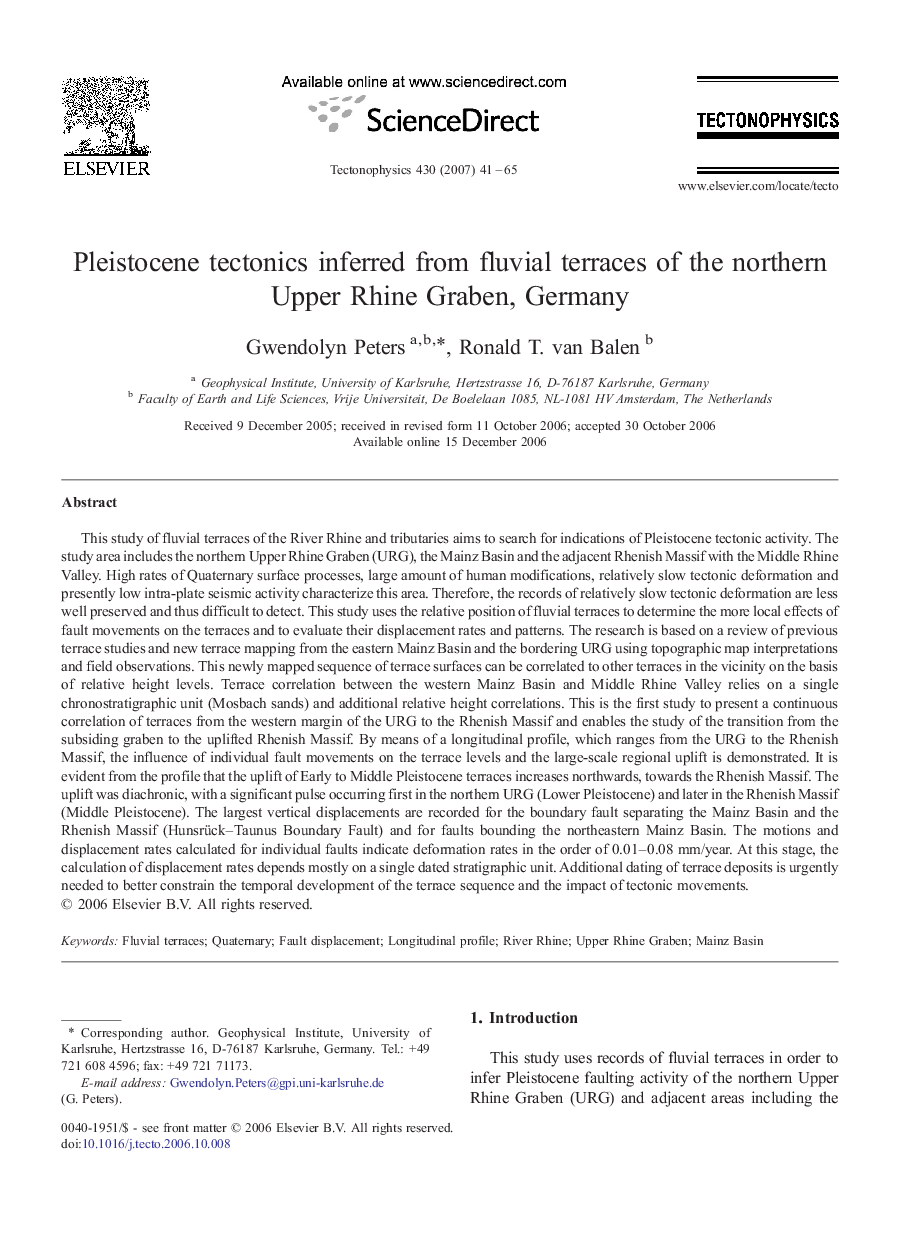| کد مقاله | کد نشریه | سال انتشار | مقاله انگلیسی | نسخه تمام متن |
|---|---|---|---|---|
| 4694745 | 1636939 | 2007 | 25 صفحه PDF | دانلود رایگان |

This study of fluvial terraces of the River Rhine and tributaries aims to search for indications of Pleistocene tectonic activity. The study area includes the northern Upper Rhine Graben (URG), the Mainz Basin and the adjacent Rhenish Massif with the Middle Rhine Valley. High rates of Quaternary surface processes, large amount of human modifications, relatively slow tectonic deformation and presently low intra-plate seismic activity characterize this area. Therefore, the records of relatively slow tectonic deformation are less well preserved and thus difficult to detect. This study uses the relative position of fluvial terraces to determine the more local effects of fault movements on the terraces and to evaluate their displacement rates and patterns. The research is based on a review of previous terrace studies and new terrace mapping from the eastern Mainz Basin and the bordering URG using topographic map interpretations and field observations. This newly mapped sequence of terrace surfaces can be correlated to other terraces in the vicinity on the basis of relative height levels. Terrace correlation between the western Mainz Basin and Middle Rhine Valley relies on a single chronostratigraphic unit (Mosbach sands) and additional relative height correlations. This is the first study to present a continuous correlation of terraces from the western margin of the URG to the Rhenish Massif and enables the study of the transition from the subsiding graben to the uplifted Rhenish Massif. By means of a longitudinal profile, which ranges from the URG to the Rhenish Massif, the influence of individual fault movements on the terrace levels and the large-scale regional uplift is demonstrated. It is evident from the profile that the uplift of Early to Middle Pleistocene terraces increases northwards, towards the Rhenish Massif. The uplift was diachronic, with a significant pulse occurring first in the northern URG (Lower Pleistocene) and later in the Rhenish Massif (Middle Pleistocene). The largest vertical displacements are recorded for the boundary fault separating the Mainz Basin and the Rhenish Massif (Hunsrück–Taunus Boundary Fault) and for faults bounding the northeastern Mainz Basin. The motions and displacement rates calculated for individual faults indicate deformation rates in the order of 0.01–0.08 mm/year. At this stage, the calculation of displacement rates depends mostly on a single dated stratigraphic unit. Additional dating of terrace deposits is urgently needed to better constrain the temporal development of the terrace sequence and the impact of tectonic movements.
Journal: Tectonophysics - Volume 430, Issues 1–4, 5 February 2007, Pages 41–65